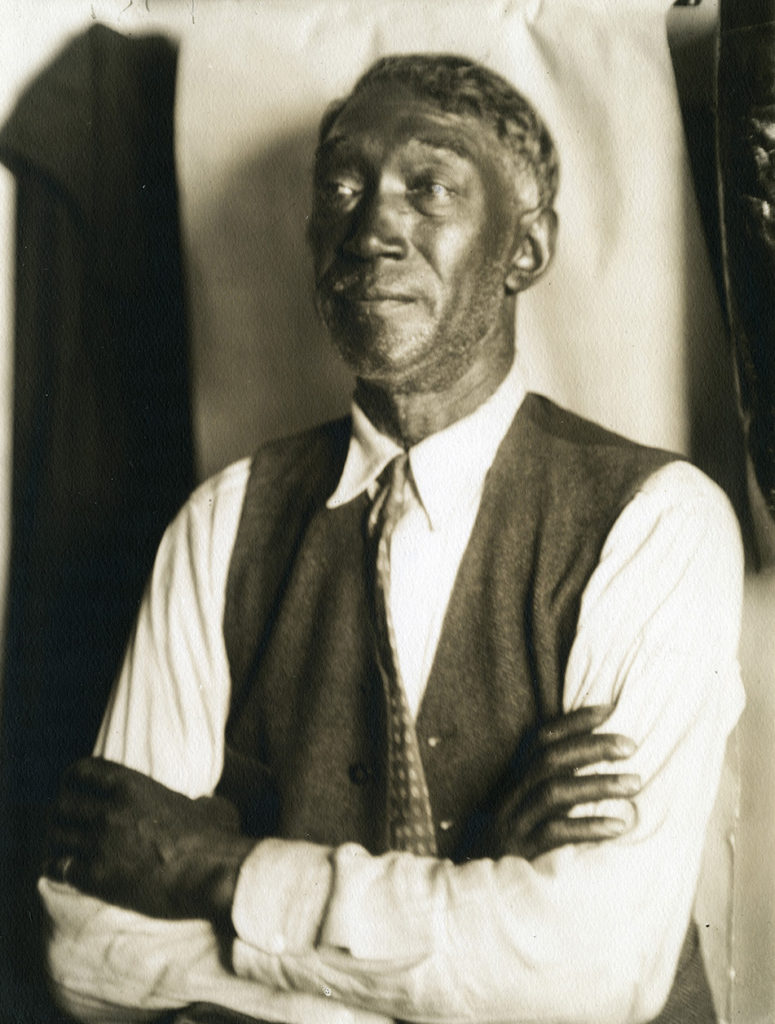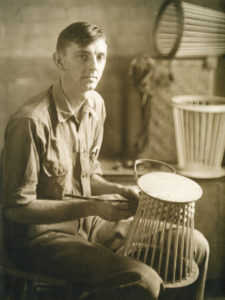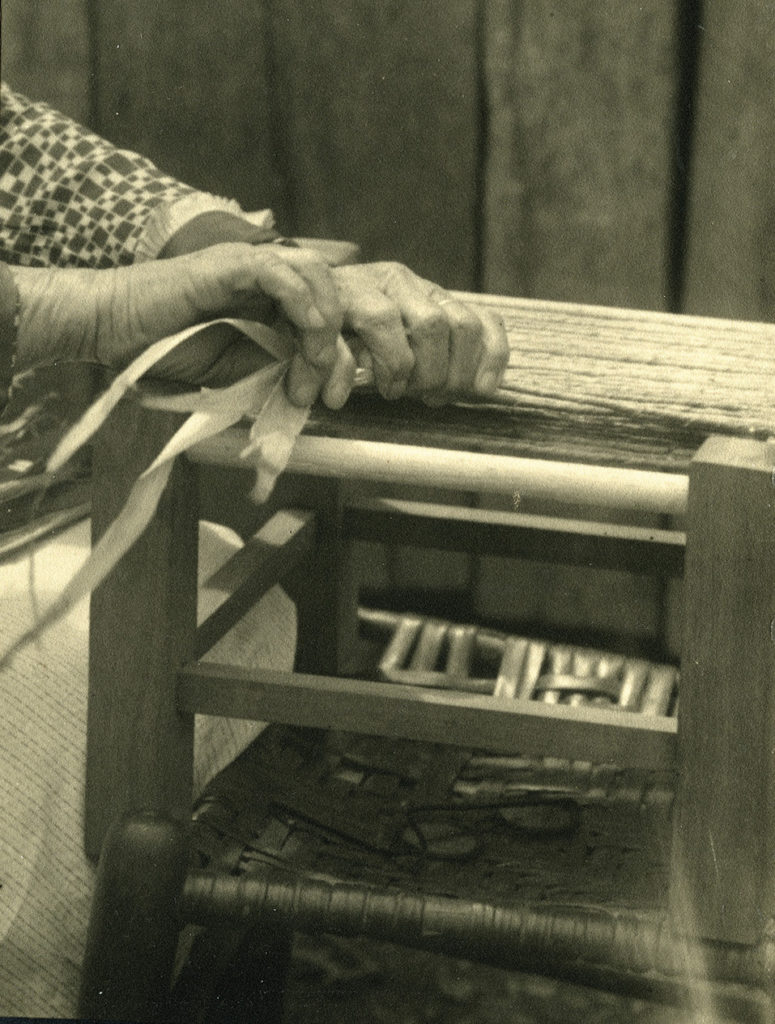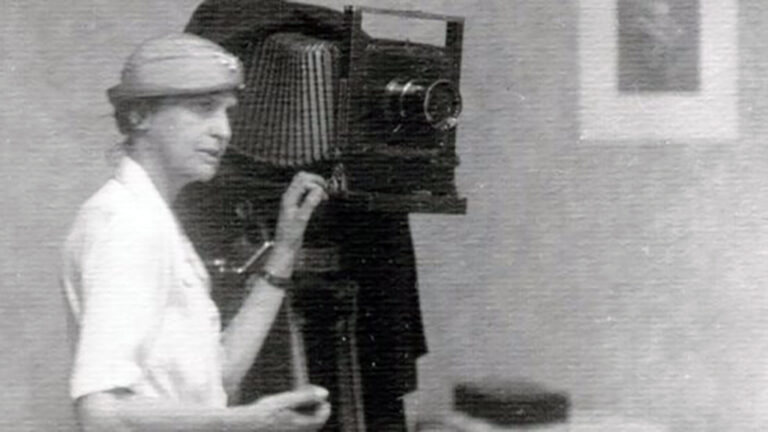“Are there any circumstances under which it might be possible for Berea College to receive copies of the photographs which you had on exhibit at the Southern Mountain Workers Conference in Knoxville?”
On May 9, 1930, Berea’s President William Hutchins posed that question in a letter he wrote to Doris Ulmann. He was seeking to kindle a relationship between the renowned photographer and the small liberal arts college that was dedicated to educating the same population Ulmann had spent the past several years photographing and documenting along her journeys through the southeastern United States. Hutchins had been captivated by Ulmann’s display in Knoxville, as was most of the country. After years of making portraits of prominent celebrities and modernist giants like Ansel Adams, Albert Einstein, Martha Graham, Edna St. Vincent Millay, José Orozco and Thornton Wilder in her New York home, Ulmann decided to devote herself to pursuing her longstanding interest in people “for whom life had not been a dance.”

Around 1925, Ulmann became interested in preserving rural traditions and folklore. For years, she traveled extensively throughout southern Appalachia and collaborated with novelist Julia Peterkin, exploring the life of African American Gullah residents in South Carolina, and musician John Jacob Niles as he documented folk songs and musical traditions. Ulmann’s photographs of people in the Appalachian regions of Virginia, Kentucky, Tennessee, Georgia and South Carolina produced between 1927 and 1934 are her best-known works and have become invaluable documents of African American and white southern folklife of the time.
In President Hutchins’ first communication with Ulmann immediately after the Knoxville conference, he praised her exhibit and thanked her for her efforts. In a letter dated from April 1930, Ulmann responded, saying, “I am very grateful to you for your letter because your words have made me feel that I have perhaps succeeded in expressing a little of the great and deep humanity of these fine and sturdy mountain people. It helps to know that one’s work has been of some value.”
Crafting a Career

William Victor McConkey, pictured below working on a wooden wastebasket, first came to Berea around 1926 to attend the Berea Academy. After graduating, he was employed by the Berea College Woodcraft department. Just a year later, he was promoted to foreman of the department’s cabinet shop. In September 1940, McConkey was hired as the industrial superintendent of woodcraft at the U.S. Public Health Service Hospital in Lexington, Ky. The hospital had just opened an incarceration rehabilitation facility and began a woodcraft program to help recovering addicts learn a trade and regain productivity. While in the superintendent’s role, McConkey built furniture for President Lyndon B. Johnson that was used in the White House and several conference tables for the Executive Office building in Washington D.C. He retired in 1973 from Public Health Services and died in Lexington in February 1993.
It would be three years before Ulmann and her work reached Berea College, as a result of several letters of correspondence between Hutchins and Niles, who had been traveling with and assisting Ulmann for about a year. Ulmann and Niles’ visit, scheduled for Oct. 26, 1933, would include a display of Ulmann’s photographs and Niles speaking to and performing music for the students and faculty. During the planning for this visit, Niles and Hutchins conversed about where to display Ulmann’s photographs. Hutchins mentioned the new art building Berea was preparing to erect and alluded to the possibility of the building housing a permanent exhibit of Ulmann’s work. Niles responded, “Miss Ulmann was pleased to hear about your art building, and a permanent exhibition is one she has long considered.”
After Ulmann and Niles’ October 1933 visit, Ulmann wrote to Hutchins expressing her gratitude and impatience to return to the campus to make pictures of the activity and interesting people at the College.
“My visit at Berea has made a deep and delightful impression, and ever since we bade you farewell my thoughts have been busy with your very remarkable and effective institution,” Ulmann wrote to Hutchins on Nov. 3, 1933. “It is a blessing to know of a place in the world where everybody is giving out of the fullness of his heart without ever thinking of a spiritual or material return.”
Ulmann and Niles arranged to return to Berea the following spring as part of their 7th Ulmann Niles Folk Lore Photographic Expedition. From April 23 to June 2, 1934, Ulmann stayed in Berea working with the College to document people in and around the campus and community as well as staff and students, especially at their crafts. Ulmann sought to capture through images what she described as “a whole atmosphere which must be felt.”
Less than three months after leaving Berea College, Ulmann fell ill. She died on Aug. 28, 1934. Upon her passing, Hutchins wrote a letter of condolence to Niles and praise for Ulmann’s life and work.
“In Miss Ulmann, I found a singular gentleness and grace, a self-abnegation joined with an amazing human interest,” Hutchins wrote. “I question whether any woman has walked under the trees of our campus or visited our home who has identified herself more closely than she with the lives of our boys and girls.”

The permanent exhibit at the College, which had intrigued her just one year earlier didn’t die with her, however. Through Niles and Hutchins’ correspondence and planning, Ulmann bequeathed $15,000 to Berea for the completion of a wing of the Rogers Memorial Art Building and the printing of her photos for permanent exhibition.
The original Berea College art collection was established in 1935 as a teaching collection with the purpose of providing Berea College students with the best examples of art and artifacts from around the world. Today, the art collection is comprised of more than 14,000 works of art and artifacts of cultural significance. Known for its high quality, the collection includes 3,000 Doris Ulmann photographs. The Doris Ulmann Galleries are open daily to visitors and art enthusiasts from across the region and around the world.


